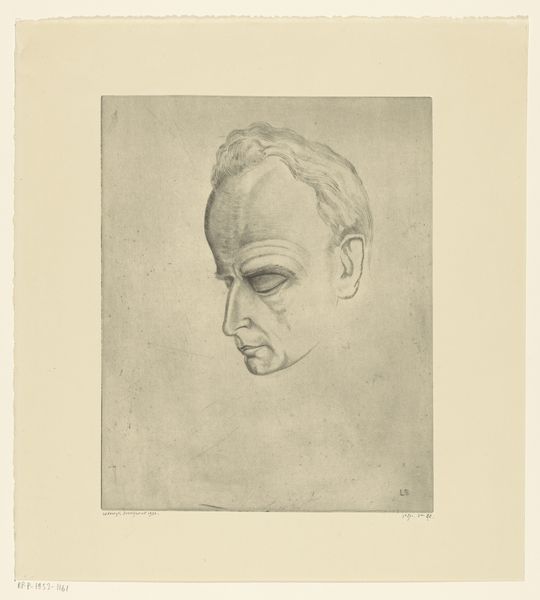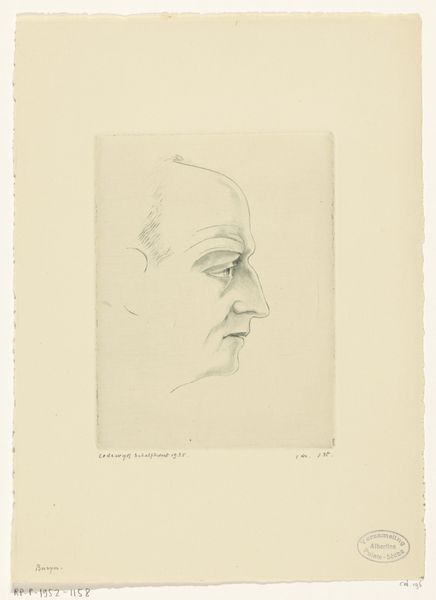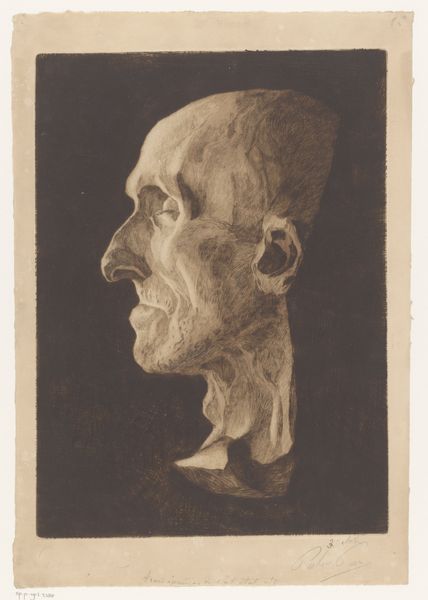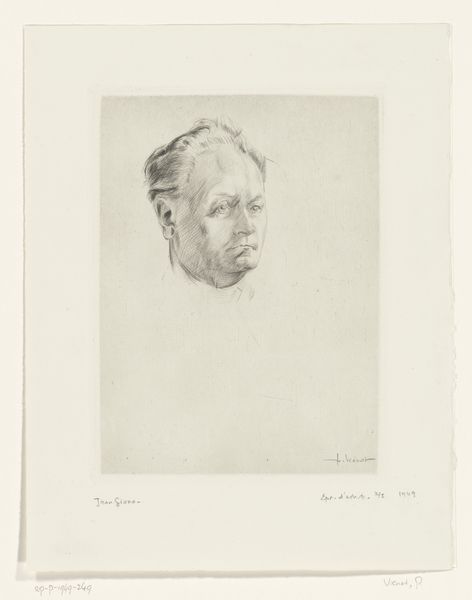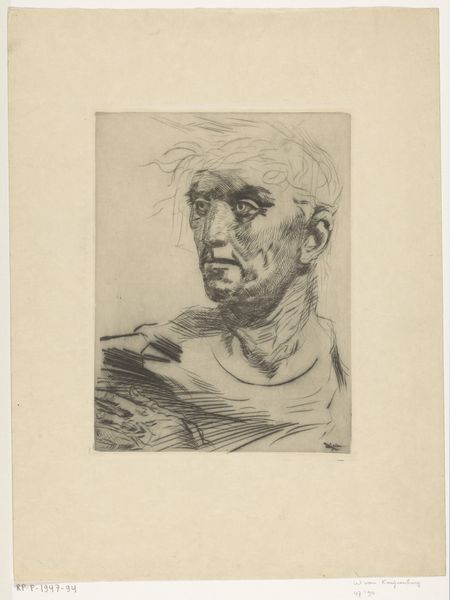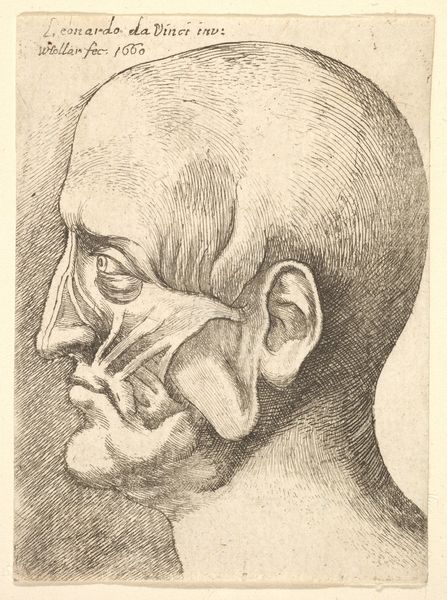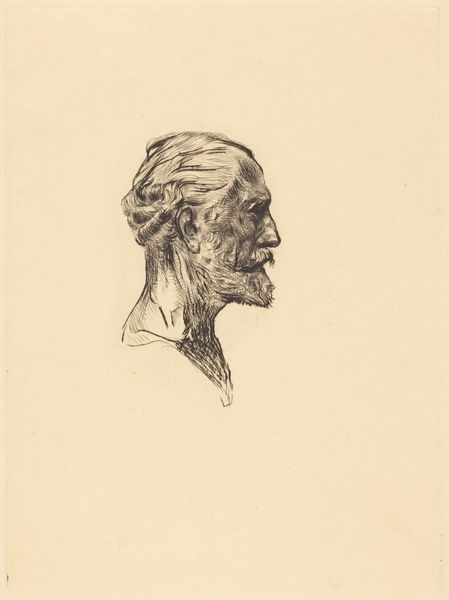
drawing, graphite
#
portrait
#
drawing
#
caricature
#
graphite
#
portrait drawing
#
academic-art
#
realism
Dimensions: height 296 mm, width 238 mm
Copyright: Rijks Museum: Open Domain
Curator: Lodewijk Schelfhout created this graphite drawing titled "Portret van Ferdinand Bordewijk" in 1936. It now resides here at the Rijksmuseum. Editor: My first thought is "melancholy scholar." He looks so introspective, like he's carrying the weight of the world's knowledge on his brow. Curator: Indeed, the sitter, Ferdinand Bordewijk, was a very well-known Dutch author. Given Schelfhout's history as a caricaturist and his engagement with the Amsterdamse School, his portrayal carries significant weight within the literary and artistic circles of the time. This portrait provides commentary on Bordewijk’s intellectual persona. Editor: Caricaturist, you say? That explains the…pronounced features. There’s something almost architectural about the way his head is rendered – the skull as structure, the skin stretched over it like vellum. Makes you wonder what stories those bones could tell. And those eyes! He seems almost asleep, shut off from the world. Is that comment on the writing process, I wonder? Curator: Precisely! Consider the cultural landscape. The 1930s in Europe were marked by increasing political tension and intellectual ferment. Bordewijk’s novels often explored themes of power, bureaucracy, and individual struggle against societal forces. Schelfhout captures a certain vulnerability beneath Bordewijk's stoic exterior. Editor: It’s amazing how a simple graphite drawing can be so evocative. There’s this intense realism, but at the same time, an exaggeration that teeters on the edge of the absurd. And yet, there's also respect evident here. It really makes you think about the man beyond the public figure, and also the act of observation itself – the artist scrutinizing the author, capturing a fleeting moment of contemplation. What does it mean to capture another person's essence on paper, right? Curator: It challenges us to unpack the multifaceted relationship between the artist, the sitter, and the cultural moment that shaped them. Schelfhout invites us to look beyond the surface and delve into the intellectual climate of the Netherlands during the interwar period. Editor: Absolutely. It feels like an invitation to a silent conversation. And who knows, maybe we'll even get an answer back someday!
Comments
No comments
Be the first to comment and join the conversation on the ultimate creative platform.
